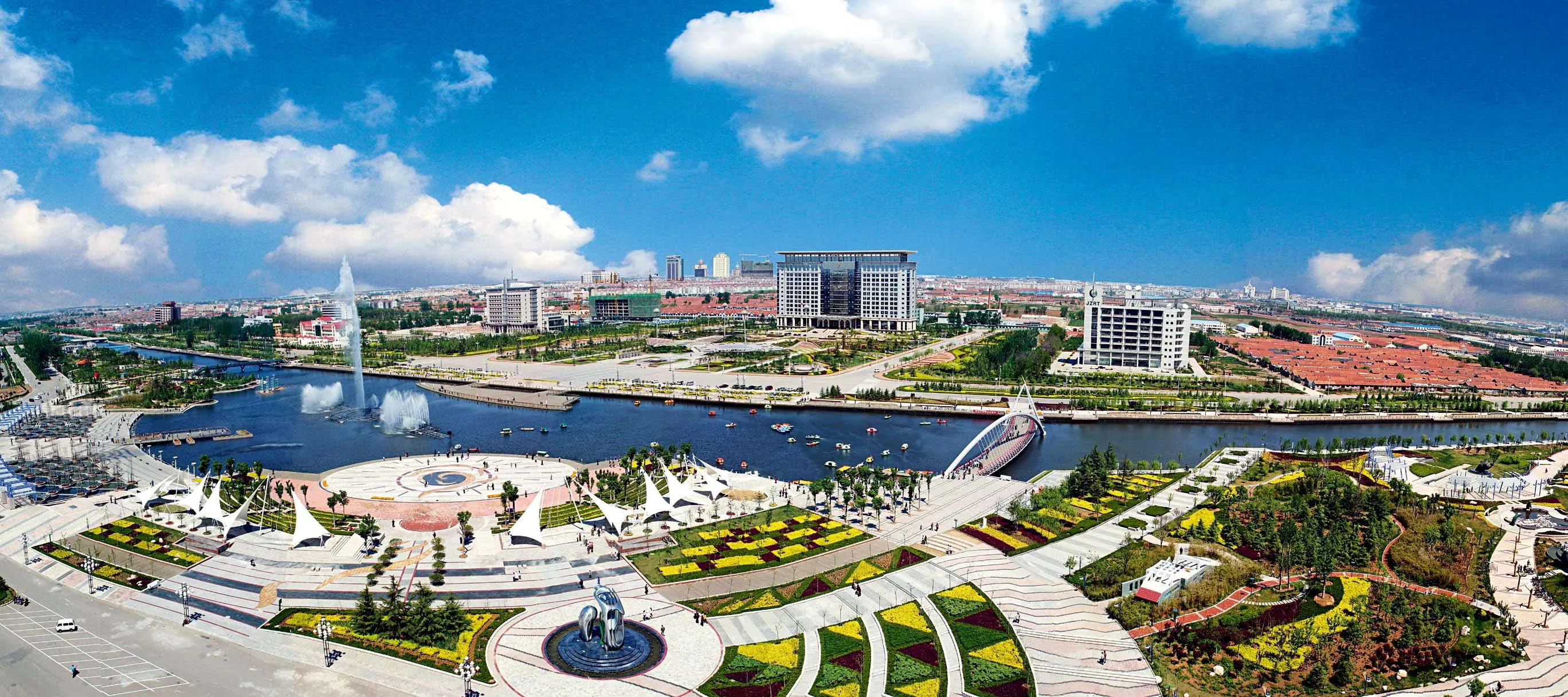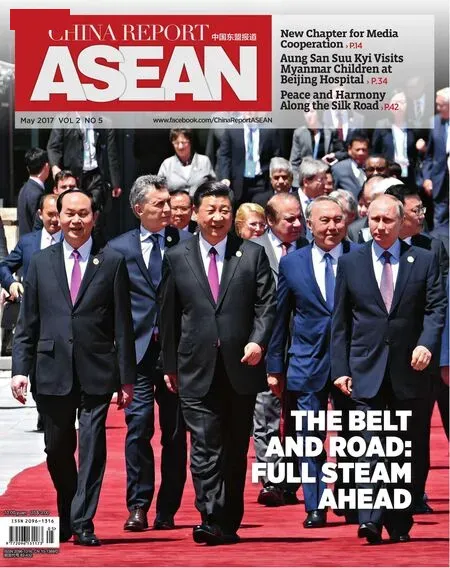More Than Just An Ancient Port
2017-07-18By
By
More Than Just An Ancient Port
ByWang Zhe
China’s eastern coastal city of Qingdao seeks to become a free trade hub along the Belt and Road
Visitors to the Jiaozhou City Development Museum in Qingdao, a coastal city in eastern China’s Shandong Province, are often impressed by a dynamic screen displaying moving images depicting the busy trading scenes of Qingdao’s Banqiao Town from more than 1,000 years ago. According to surviving historical materials, this place once witnessed commercial prosperity on par with that as portrayed on “Along the River During the Qingming Festival”, a masterpiece painting from the Song Dynasty (960-1279).
Archeological research shows that as early as some 4,500 years ago, Banqiao Town already saw ships sailing to the ocean. Beginning in the Spring and Autumn Period (770-476 BC), the eastern line of the Maritime Silk Road emerged there, stretching from Banqiao to what is now the Korean Peninsula and the Japanese islands. It was via this route that during the Tang Dynasty (618-907), merchants, diplomats and monks from Goryeo and Japan traveled all the way to China. During the Song Dynasty (960-1279), the central authorities set up a customs-like agency in Banqiao, the only of its kind in northern China at the time. Goods and materials from East Asia and South Asia were transported here for distribution and sales. At its zenith, Banqiao even attracted merchants from as far as the Arab Empire.
While Banqiao’s glory has become history, Qingdao, as one of China’s fi rst opening coastal cities, is glowing on the world stage with a number of local group corporations, such as Haier, Hisense, Qingjian and Jifa, accelerating their pace of“going global”. Thanks to their well-established global system of research, production and marketing, these enterprises have taken an active part in the implementation of the Belt and Road Initiative, producing a strong inf l uence in China and even around the world.
Today, as the Ancient Silk Road is being revitalized with modern implications, Banqiao Town’s traditional strength and glory as a commercial hub continue to grow, radiating throughout the rest of Northeast Asia.
International Land and Maritime Passages
On April 10, the Netherlands-China (Qingdao) Economic and Trade Cooperation Conference took place in Qingdao, aimed at promoting trade links between Qingdao, the world’s seventh largest port, and Rotterdam Port, dubbed the “gateway of Europe”. Respectively located at the eastern and western ends of the“Belt and Road”, the two ports are expected to be better connected with the establishment of the Euro-Asia Economic and Trade Cooperation Industrial Park (EAETCIP), which is committed to adhering to the Silk Road Spirit of “extensive consultation, joint contribution, shared benef i ts and win-win”.

Banqiao Town in Qingdao, Shandong Province.
Prior to this, the Qingdao Municipal Bureau of Commerce organized three business delegations to nine countries including Singapore, Japan, South Korea, Russia, Belarus, Georgia, Poland, Germany and the Netherlands, and hosted nearly 10 promotional events for the EAETCIP, making substantial progress in the construction of expanded trade routes along the Belt and Road. Just two weeks after the Qingdao delegation’s visit, the Netherlands side paid a return visit, showing sincerity and enthusiasm for cooperation.
Established with the support from China’s Ministry of Commerce, the EAETCIP is designed to facilitate crossborder cooperation across the Eurasia continent and build an international trade hub with the logistics trade as the main driving force. Aiming at an international trade passage oriented toward Japan, South Korea and the rest of the Eurasia continent, as well as a modern distribution platform for international trade, the industrial park has garnered wide attention from both home and abroad.
Within China, based in the Qingdao Jiaozhou Economic and Technological Development Zone, the EAETCIP will give full play to the functions of the customs supervision center for combined transportation by highways, ocean, air and railways and work with European and Asian countries along the Belt and Road to develop international trade and logistics industries and promote international industrial capacity cooperation. Outside China, Qingdao encourages industry giants such as Haier, Hisense and Aucma to conduct two-way investment and trade cooperation with European and Asian countries and plans to set up processing and assembly bases in Belt and Road countries.
Along with the implementation of the Belt and Road Initiative, Qingdao is improving its direct links with the rest of the world. To the west, it is connected via land to Europe, and to the east, Japan and South Korea. To the south, it will be better connected to the Yangtze River Delta and developed cities along China’s southeastern coast, and extend its reach to South Asia, Southeast Asia and even the entire Pacif i c Rim.
System of Free Trade Stations
In terms of infrastructure connectivity, by integrating its land, sea, air and railway resources, Qingdao is striving to foster a sea-rail combined transportation model, establish a customs supervision center for combined transportation, and explore a new model for customs supervision. It has creatively put forward the idea of building free trade stations along the Belt and Road. At present, a four-pronged system of free trade stations has taken shape, with enterprises as the main player, the customs supervision zone as the carrier, government as the supporter and international and regional cooperation as the propeller. Thus, a regional cooperation alliance that features a broad market, abundant resources, low costs, high efficiency and multiple functions is emerging, and an ef f ective, valuable theoretical and practice system has formed.
Qingdao’s achievements in economic and trade cooperation with Belt and Road countries are remarkable. Over the past decade, the city has seen an average 11.8 percent annual growth in trade with countries in Central Asia, Central and Eastern Europe, West Asia, South Asia, Southeast Asia, Northeast Asia and Africa, as well as an average 77.7 percent annual growth in foreign direct investment in those countries.
“An exceptional geographical location alongside historical and cultural advantages explain the irreplaceable role of Qingdao in Belt and Road construction,”said Zhang Yunling, a member of the Chinese People’s Political Consultative Conference and member of the Chinese Academy of Social Sciences.
